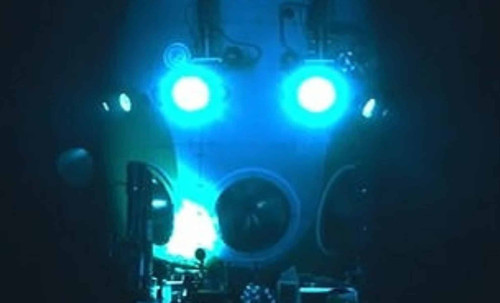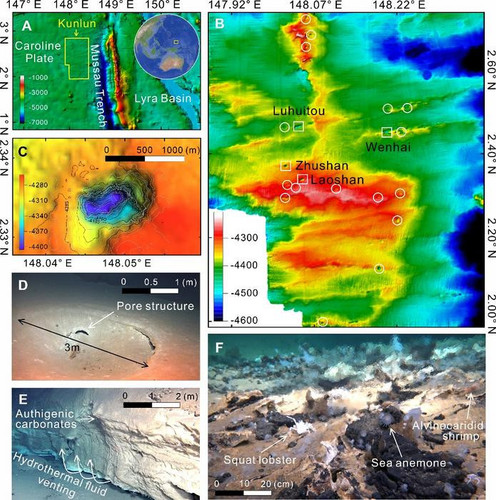Environment & Energy
Related: About this forumMysterious Structures at 3,000 Meters Beneath the Pacific May Emit Over 5 Billion in Hydrogen Each Year--No Drilling Req

A Live Streaming Session From More Than 32,808 Feet Under The Surface Of The Sea Has Captured China's Manned Submersible. CCTV/Weibo | The Daily Galaxy
Mysterious Structures at 3,000 Meters Beneath the Pacific May Emit Over €5 Billion in Hydrogen Each Year—No Drilling Required
DailyGalaxy.com | Arezki Amiri | August 24, 2025
Researchers from the Institute of Oceanology at the Chinese Academy of Sciences (IOCAS) published a study in Science Advances detailing the discovery of a massive, hydrogen-rich hydrothermal system in the western Pacific Ocean. Located west of the Mussau Trench, the system lies within the Caroline tectonic plate, at a depth of more than 3,000 meters, in a region previously thought geologically unremarkable.
This newly named Kunlun hydrothermal field covers over 11 square kilometers, making it more than 100 times the size of the Atlantic’s well-known Lost City vent system. But it’s not just size that sets Kunlun apart.
Using the Fendouzhe manned submersible and in situ Raman spectroscopy, the research team measured hydrogen concentrations of 5.9 to 6.8 mmol/kg in diffuse hydrothermal fluids. Combined with flow velocity and discharge mapping, the team estimated an annual hydrogen output of 4.8 × 10¹¹ moles, which equates to about 1 million metric tons of molecular hydrogen per year. That’s roughly 5% of the total natural underwater hydrogen flux worldwide—coming from a single site.
Hydrogen From the Deep more
https://dailygalaxy.com/2025/08/mysterious-structures-beneath-the-pacific-emit-over-e5-billion-in-hydrogen/

Low Res Hydrothermal Activities And Distribution Of Pipe Swarms On The Subducting Plate Near The Mussau Trench. Credit: IOCAS
CaliforniaPeggy
(154,923 posts)Response to Caribbeans (Original post)
Cne99999 This message was self-deleted by its author.
NNadir
(36,438 posts)It would require the processing of 73 kg of water to get a single gram of hydrogen. (The molecular weight of hydrogen is 2.0158 g/mol.) Whence the energy for this process? From magic hydrogen?
All of these ads that are here intending to rebrand fossil fuels as hydrogen are absurd and many of them require extreme scientific illiteracy to take seriously. This one is among the most illiterate which is saying something because in general these "green hydrogen" posts/ads are appallingly absurd. Regrettably scientific illiteracy is hardly in short supply. Hence, for half a century this "Green hydrogen" scam while waxing and waning in a somewhat sinusoidal fashion, rears its ugly head every decade or so.
If they are AI, they fail the Turing test.
Meanwhile the planet is burning.
NickB79
(20,066 posts)The escaping hydrogen feeds the chemosynthetic bacteria that form the basis of the food chain.
Mining it for hydrogen, even if feasible, would be an ecological disaster.